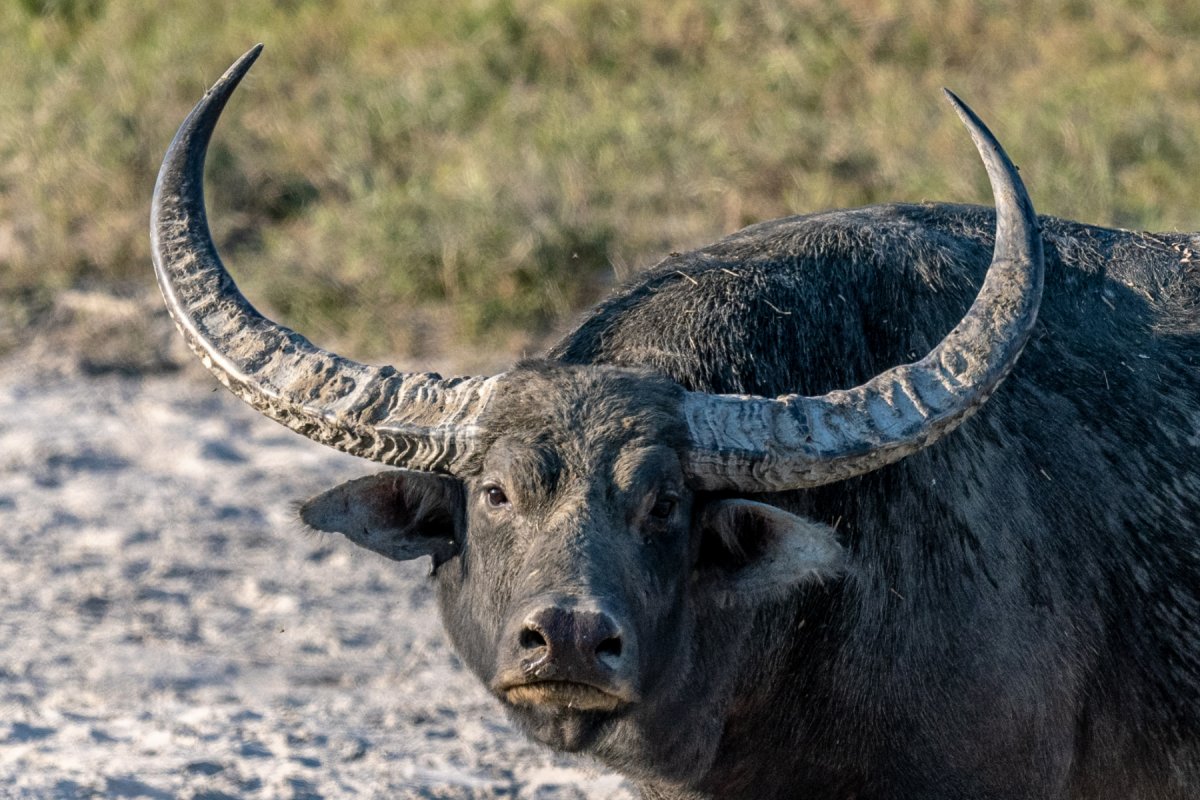The perils of Australian outback life were underlined again for one unfortunate man, who was attacked by a buffalo and ended up being pinned to a fence by its horns.
The man in his 50s from Wagga Wagga was pinned at his chest and his abdomen, and crushed across his lower limbs and torso, as well as suffering from a punctured windpipe, according to a description of the accident in a British Medical Journal Case Reports paper.
"Research suggests this condition can be potentially life threatening," Jack Peter Archer, one of the doctors at Wagga Wagga Base Hospital, where the man was treated for his injuries, told Newsweek.

This kind of punctured windpipe—known technically as a hypopharyngeal perforation— is usually associated with road traffic accidents, often from hitting the neck on the steering wheel, or with low-speed direct blows to the neck.
They are rare: Less than two percent of all perforations in the pharyngoesophageal (windpipe and esophagus) region are hypopharyngeal.
The perforation occurs when cartilage in the larynx (voicebox) is compressed against the bones of the spine behind it. During this compression, the upper airway closes as it is pressed against the bone, but the air from the lungs will continue to attempt to leave.
If the force of this air exceeds the "bursting pressure" of the hypopharyngeal–esophageal junction—a weak spot—the compressed air can perforate the tissue, creating a tear in the windpipe as the air forces its way out, and lead to the injury seen in the Wagga Wagga man.
He also had a fracture on his fibula or calf bone, as well as cuts and scrapes across his body.
There are both farmed and wild buffalo in Australia, but it is not known which type injured the man in this case.

This isn't the only time that buffalos have caused major injuries in Australia.
There are two types of water buffalo in Australia, the river buffalo, which have horns that curl backwards, and the swamp buffalo, whose horns grow outwards and form more of a semicircle shape. At their largest, these horns can measure up to 10 feet from tip to tip.
Domestic water buffalo don't tend to be aggressive towards humans—unlike the Cape buffalo of Africa—but when threatened or wounded, they may charge. Additionally, wild buffalo tend to be a lot more aggressive, and can reach speeds of 30 miles per hour.
The force of the collision alone is enough to seriously injure a human, as these beasts can weigh up to 2,650 pounds, leading to blunt-force trauma and crushing injuries. If hit by one of its massive horns, however, injuries can be a lot worse, as goring can seriously damage internal organs and cause massive bleeding.
Say "hello" to the water buffalo! This large bovid can grow up to 6 ft (1.8 meters) tall at the shoulders & weigh as much as 2,600 lbs (1,179 kg). It enjoys spending time grazing & wallowing in mud in Asia's tropical forests. pic.twitter.com/Brh8B2swZd
— American Museum of Natural History (@AMNH) January 22, 2023
Buffalo-inflicted injuries happen from time to time in Australia. In 2017, a 61-year-old safari tour guide was rushed to hospital after throwing himself into the path of a buffalo charging at another man who had fallen to the ground.
In 2020, a woman in Sydney was attacked by a buffalo, causing leg injuries. New South Wales Ambulance Inspector Audie Jousif said at the time that "being called to a buffalo attack in Sydney is one of the more unusual incidents".
While pinned by the buffalo against a fence, it appears that the Wagga Wagga patient had not been gored, rather just severely crushed.
The case study paper states that this patient's windpipe perforation was found not to be leaking air, so they did not treat him surgically.
"The patient was managed conservatively with intravenous dexamethasone to reduce neck and airway swelling, and intravenous Ceftriaxone/metronidazole for antibiotic prophylaxis for 72hrs. He was started on clear fluid with a gradual upgrade in diet," Archer said.
This essentially means that he was given antibiotics to reduce infection risk and anti-inflammatories to prevent his neck from swelling up and hindering his breathing. He was initially fed only with liquids, but they slowly gave him more solid foods as he recovered.
"Research suggests that these [hypopharyngeal perforation] patients can develop complications such as long term speech and swallowing difficulties, deep neck infections, pharyngeal fistula [when the airway and gut become linked, allowing stomach contents to enter the windpipe], stricture formation [narrowing of the esophagus or windpipe], acute mediastinitis [inflammation or infection in the part of your chest that contains your heart], sepsis and death," Archer said.
The man, whose name was not given, was sent home from the hospital just four days later, having had a lucky escape.
Not everyone is so lucky, unfortunately: In 2005, a 46-year-old man is thought to have been killed after a violent encounter with a buffalo in Australia's Northern Territory.
Is there a health issue that's worrying you? Do you have a question about buffalo injuries? Let us know via health@newsweek.com. We can ask experts for advice, and your story could be featured on Newsweek.
Uncommon Knowledge
Newsweek is committed to challenging conventional wisdom and finding connections in the search for common ground.
Newsweek is committed to challenging conventional wisdom and finding connections in the search for common ground.
About the writer
Jess Thomson is a Newsweek Science Reporter based in London UK. Her focus is reporting on science, technology and healthcare. ... Read more





